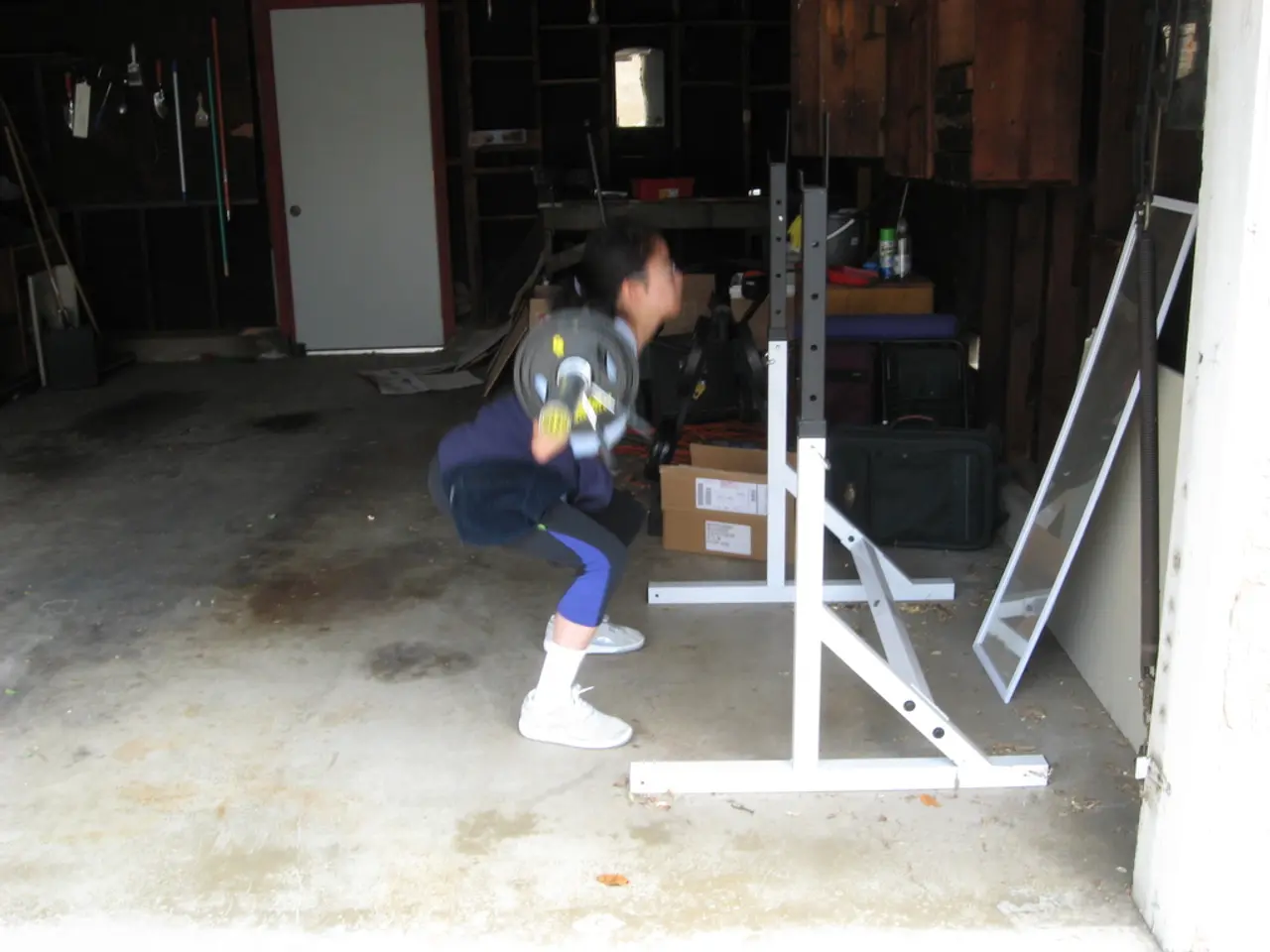Workout Secrets of the Most Physically Fit Individuals Globally
Elite Athletes Push Boundaries with Science-Based Training and Recovery
Elite athletes are renowned for their peak physical condition, and it's no secret that they follow highly structured and science-based training programs. These programs, combined with systematic recovery strategies, are tailored to individual needs to maintain their performance at the highest level.
The training regimens of these world-class athletes involve periodization, a method that divides training into phases to manage workload and maximize adaptation while avoiding burnout. They leverage progressive overload, gradually increasing training intensity and volume, and emphasize specificity, tailoring exercises to match their sport's demands. Training often includes diverse modalities such as high-intensity interval training (HIIT) for anaerobic power and neuromuscular development, strength training with compound lifts or Olympic lifts, and conditioning circuits to build speed, power, and endurance.
Recovery is equally prioritized with a multifaceted approach. Athletes understand the importance of sleep, aiming for 7-9 hours each night for nervous system recovery and performance enhancement. Active recovery techniques like light aerobic exercise, cold therapy, and compression are used to reduce muscle soreness, clear metabolic fatigue, and improve circulation. Technology plays a significant role in recovery, with wearable devices and high-tech training tools helping athletes track progress and optimize performance. Nutritional strategies focusing on anti-inflammatory nutrients, hydration, and timed protein intake also support muscle repair and reduce fatigue.
Mental resilience and psychological tools are crucial for elite athletes. They develop mental toughness to manage pain and discomfort during training or competition. Examples from HYROX elite programs demonstrate the integration of functional movement assessments and corrective exercises to prevent injury and optimize biomechanics throughout training. They also continuously monitor performance markers and adapt plans using data-driven insights to ensure optimal progression.
Elite athletes also emphasize consistent rest periods and understand the importance of taking breaks to allow full recovery and adaptation. Personalized training plans are essential for successful fitness routines, as they are tailored to individual needs, goals, and physical capabilities. Mat Fraser, a CrossFit Games champion, incorporates deload weeks into his routine to ensure his body has time to fully recover.
Cross-training helps athletes avoid physical plateaus by challenging different muscle groups and energy systems. Chris Froome, the British professional cyclist, cross-trains with activities like swimming and running to improve his cardiovascular endurance and strength. Long-distance running and cycling are important for building cardiovascular health and endurance, despite not being favored by all strength athletes.
Supplements can give athletes an edge when it comes to performance by reducing muscle fatigue, boosting energy levels, and speeding up recovery. Usain Bolt used visualization to mentally rehearse his races, allowing him to block out distractions and execute his performance at an incredibly high level. Active recovery, such as low-intensity activities like yoga or swimming, can increase blood flow to muscles, promoting healing without overtaxing the body.
LeBron James and Tom Brady are high-profile athletes who swear by meditation as a way to stay focused and maintain mental clarity throughout their careers. Elite athletes, fitness experts, and top performers employ virtual coaching apps and recovery tools like Hyperice and Theragun to aid in muscle recovery. Sleep is critical for an athlete's recovery, as it allows the body to repair itself, regenerate muscle tissue, and release growth hormones essential for muscle growth and repair.
In summary, elite athletic training and recovery rely on evidence-based methodologies combining periodized, sport-specific training with advanced, individualized recovery protocols, supported by monitoring technologies and mental performance strategies. These strategies help maintain peak physical condition and push the boundaries of human strength, endurance, and recovery.
- Elite athletes prioritize science-based training and recovery methods to maintain peak physical condition.
- Training programs for these athletes are structured, cutting-edge, and matched to individual needs.
- Periodization and progressive overload are common strategies used in training, ensuring adaptations without causing burnout.
- Endurance, anaerobic power, and neuromuscular development are targeted with HIIT, strength training, and conditioning circuits.
- Recovery is equally crucial, with sleep, active recovery, and technology playing significant roles.
- Adequate sleep (7-9 hours nightly) aids nervous system recovery and boosts performance.
- Active recovery techniques (like cold therapy, compression, and light aerobic exercise) reduce muscle soreness and improve circulation.
- Wearable devices and high-tech training tools help athletes track their progress and optimize performance.
- Anti-inflammatory nutrients, hydration, and timed protein intake support muscle repair and reduce fatigue.
- Mental resilience, functional movement assessments, and corrective exercises are vital for preventing injury and optimizing biomechanics.
- Elite athletes understand the importance of rest periods for recovery and adaptation.
- Personalized training plans tailored to individual needs, goals, and physical capabilities are essential for success.
- Cross-training helps athletes avoid physical plateaus, challenging different muscle groups and energy systems.
- Meditation, mindfulness, and virtual coaching apps aid in maintaining mental focus, clarity, and performance mental health throughout a career.
- The combination of science, technology, and mental performance strategies helps elite athletes push the boundaries of human strength, endurance, and recovery while adhering to health-and-wellness principles.






